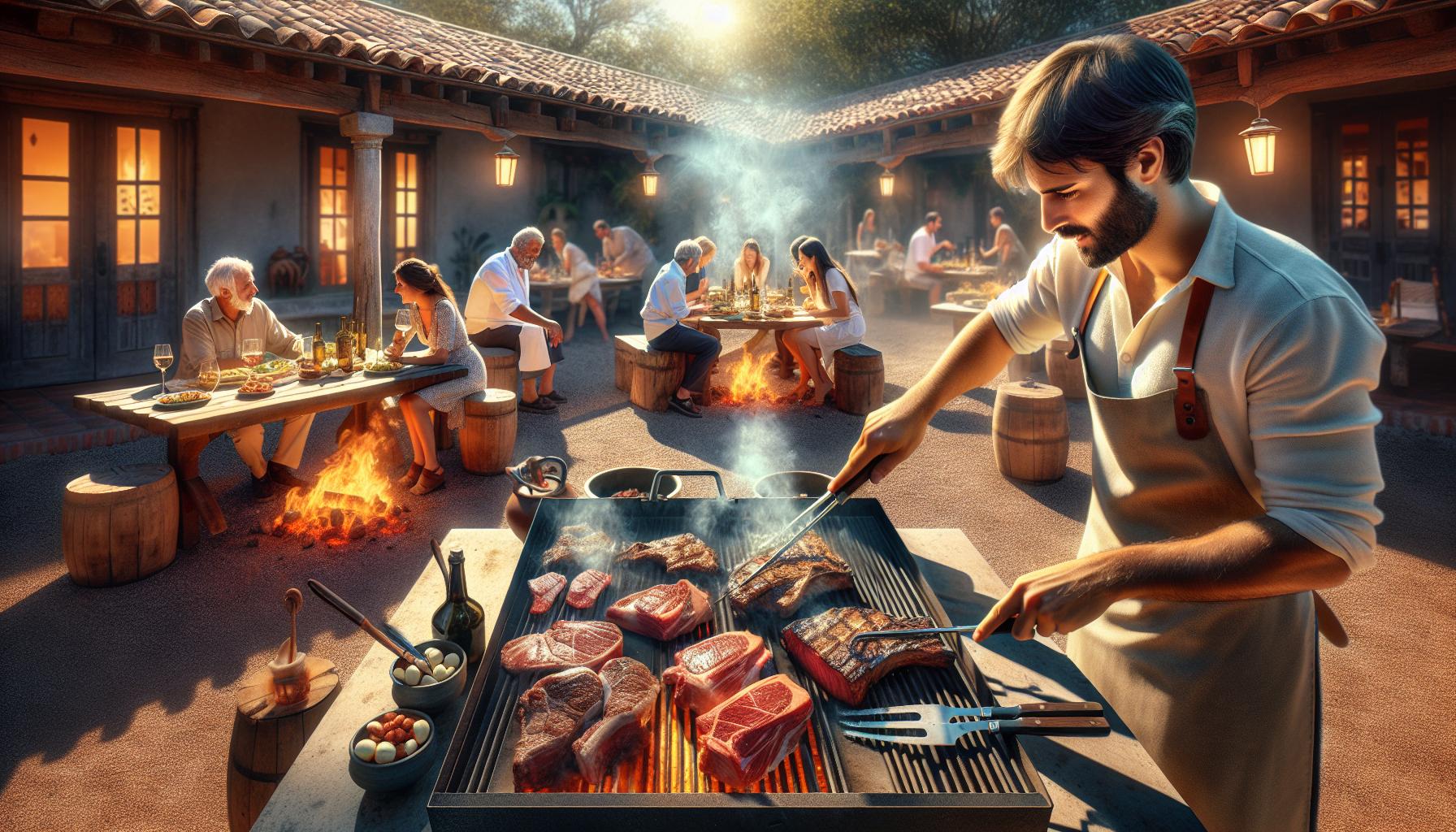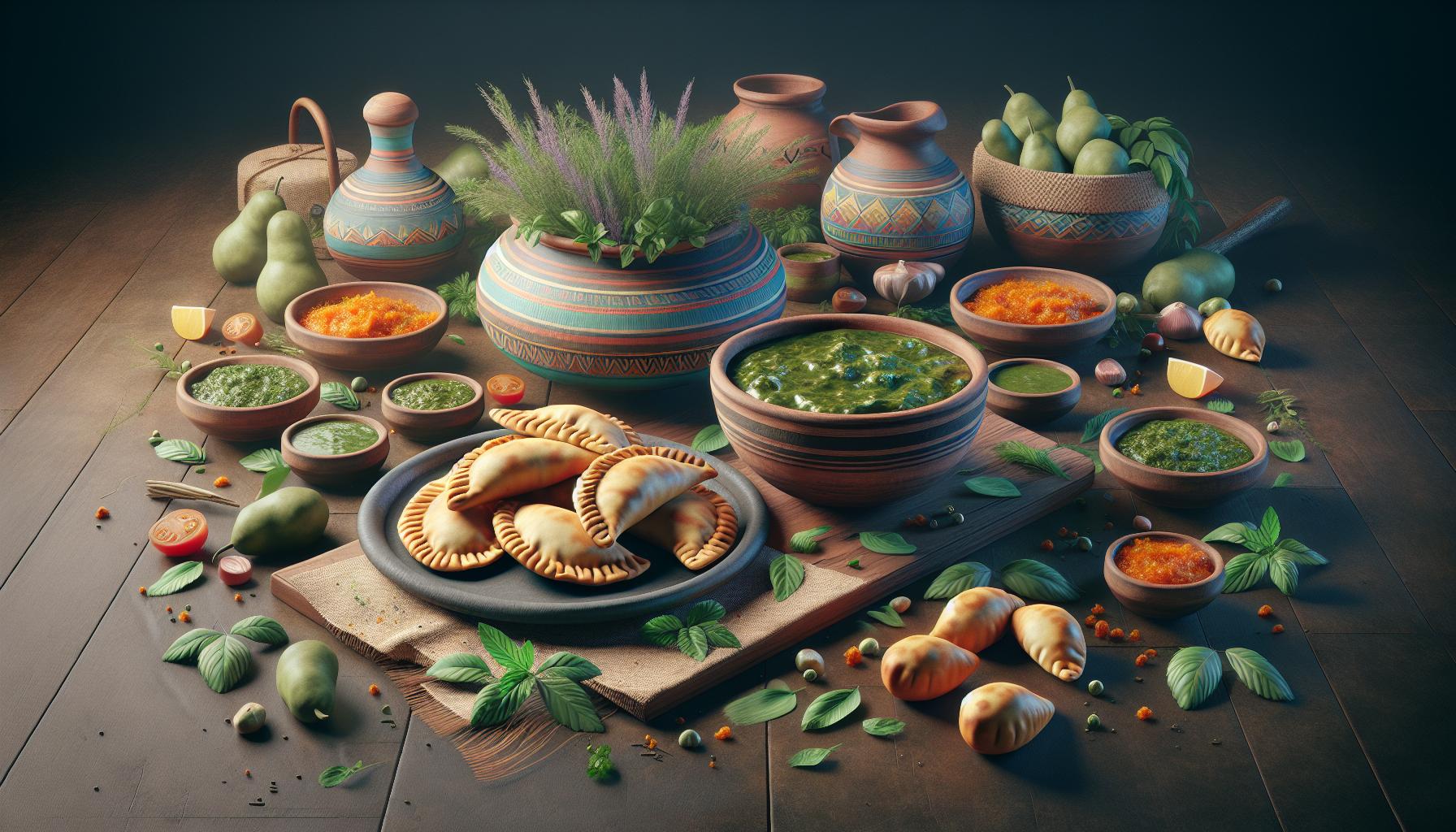Argentina Culture Food tantalizes taste buds with a unique blend of European influences and indigenous ingredients that tell stories of immigration, tradition and cultural fusion. From the sizzling parrillas loaded with perfectly grilled meats to the sweet dulce de leche-filled treats that grace every dessert menu, Argentina’s food culture is a testament to its rich heritage.
Beyond the world-famous steaks and Malbec wines, there’s a whole universe of flavors waiting to be discovered in Argentine kitchens. The country’s diverse culinary landscape stretches from the bustling cafes of Buenos Aires where locals sip mate and savor medialunas to the rustic countryside where traditional asados bring families together every Sunday. Whether it’s the hand-folded empanadas or the communal ritual of sharing mate, food isn’t just sustenance in Argentina – it’s a way of life that brings people together.
Argentina Culture Food
Argentina Culture Food embodies a complex tapestry of cultural traditions spanning centuries of immigration, indigenous practices and European colonization. The nation’s culinary identity reflects its historical evolution through distinct cooking methods, ingredient combinations and dining customs.
Cultural Influences on Argentine Food
Spanish colonizers introduced cattle ranching in the 16th century, establishing Argentina’s renowned beef culture. Italian immigrants brought pasta-making techniques, contributing to dishes like sorrentinos and ñoquis. European influences merged with indigenous Andean ingredients such as quinoa, potatoes and corn to create unique fusion recipes. French culinary traditions shaped Argentina’s pastry-making, evident in medialunas and other breakfast pastries. German settlers in Patagonia introduced beer brewing and smoked meat preparations, while Jewish immigrants contributed their own kosher adaptations of Argentine classics.
Regional Diversity in Argentine Cooking
Each Argentine region showcases distinct culinary specialties based on local ingredients and traditions. Northern provinces feature locro stews with corn, beans and squash. Patagonian cuisine emphasizes lamb, wild game and cold-water fish. The Pampas region specializes in grilled meats and traditional asados. Mendoza’s wine country pairs local Malbec with distinctive high-altitude produce. Coastal areas incorporate fresh seafood into traditional recipes. Northwestern provinces maintain pre-Hispanic food traditions using ancient grains and native tubers. The Mesopotamia region features river fish preparations and yerba mate customs. Buenos Aires blends multicultural influences in its diverse restaurant scene.
Essential Argentine Meat Dishes


Argentina Culture Food centers around high-quality beef prepared with time-honored techniques. The country’s meat-centric gastronomy reflects its rich pastoral heritage dating back to the 16th century.
The Art of Asado
Asado represents Argentina’s traditional barbecue ritual where meat cooks slowly over wood or charcoal embers. The parrillero (grill master) maintains precise temperature control using a simple iron grill called a parrilla. Choice cuts sear at varying distances from the heat source, creating distinct flavors through careful timing. Family gatherings feature this social cooking method across courtyards patios throughout the country. The process includes specific steps: lighting the fire creating the ember bed positioning the meat at the right height monitoring doneness.
Popular Beef Cuts and Preparations
Argentina Culture Food butchers utilize unique cutting methods that differ from other beef-producing nations. Premium cuts include:
- Bife de chorizo: A thick ribeye steak prized for marbling
- Tira de asado: Short ribs grilled bone-in for enhanced flavor
- Vacío: Flank steak featuring a distinctive grain pattern
- Entraña: Skirt steak characterized by intense beef flavor
- Lomo: Tenderloin valued for exceptional tenderness
- Salt-only seasoning to highlight natural meat flavors
- Slow grilling at controlled temperatures
- Serving at medium-rare to medium doneness
- Pairing with chimichurri sauce fresh herbs olive oil garlic
Traditional Argentine Side Dishes and Breads


Argentina Culture Food features distinctive side dishes that complement main courses through regional ingredients and time-honored preparation methods. These accompaniments enhance the dining experience with their unique flavors and cultural significance.
Empanadas and Their Regional Variations
Empanadas emerge as Argentina’s most versatile pastries, with 13 recognized regional variations across the country. Each province crafts these half-moon-shaped turnovers with distinct fillings that reflect local ingredients. Tucumán’s empanadas contain hand-cut beef, potatoes, egg, green onions and garlic. Salta presents spicier versions with ground beef, potatoes and peppers. Córdoba adds raisins and olives to their meat filling. Coastal regions incorporate fresh seafood, while Patagonian variations feature lamb. The dough preparation varies by region – some areas use wheat flour, others incorporate corn flour, creating different textures. Mendoza’s empanadas stand out for their spicy meat filling seasoned with paprika and cumin.
The Role of Chimichurri
Chimichurri serves as Argentina’s signature condiment, combining fresh parsley, oregano, garlic, olive oil, vinegar and red pepper flakes. Local variations add cilantro, bay leaves or red bell peppers to create distinct regional flavors. The sauce enhances grilled meats through its bright, herbaceous profile. Traditional preparation involves hand-chopping ingredients to release optimal flavors. Modern adaptations incorporate food processors while maintaining authentic proportions. The sauce matures after 24 hours of refrigeration, allowing flavors to meld. Argentine families pass down personal chimichurri recipes through generations, each adding unique touches to this essential condiment. Many restaurants feature house-made versions that showcase local herb combinations.
Sweet Treats and Desserts


Argentina Culture Food desserts showcase a delightful blend of European influences with local ingredients, creating unique confections that reflect the country’s rich culinary heritage.
Dulce de Leche Specialties
Dulce de leche forms the foundation of Argentina’s most beloved desserts. This caramelized milk spread appears in alfajores, layered cookies filled with dulce de leche and rolled in coconut. The Torta Rogel features multiple layers of crisp pastry sheets filled with dulce de leche, topped with Italian meringue. Flan con dulce de leche elevates the classic custard with a generous drizzle of this caramel spread. Helado de dulce de leche remains Argentina’s most popular ice cream flavor, offering a creamy texture with ribbons of dulce de leche throughout.
Traditional Argentine Pastries
Argentine pastries combine Spanish, Italian and French baking techniques with local innovations. Medialunas, Argentina’s version of croissants, come in two varieties: butter-based and lard-based. Pasta frola presents a shortcrust pastry tart filled with quince paste or dulce de membrillo. The vigilante pairs sweet cheese with quince or sweet potato paste. Facturas encompass a variety of sweet pastries including cañoncitos (puff pastry horns filled with dulce de leche) and bolas de fraile (round doughnuts filled with pastry cream or dulce de leche).
Argentine Dining Customs and Etiquette
Argentine dining customs reflect a blend of European influences with unique local traditions. Social dining forms the cornerstone of Argentine culture, emphasizing relaxed meals shared with family and friends.
Meal Times and Social Gatherings
Argentine meal schedules differ significantly from North American dining patterns. Breakfast runs from 7:00 AM to 10:00 AM, featuring medialunas (croissants) with café con leche. Lunch occurs between 12:30 PM and 2:00 PM, serving as a substantial midday break. Merienda, the afternoon tea tradition, takes place from 4:00 PM to 6:00 PM, including pastries and mate tea. Dinner starts remarkably late, typically at 9:00 PM or later, extending past midnight on weekends.
| Meal | Time | Common Foods |
|---|---|---|
| Breakfast | 7:00-10:00 AM | Medialunas, coffee |
| Lunch | 12:30-2:00 PM | Main dishes, salads |
| Merienda | 4:00-6:00 PM | Pastries, mate |
| Dinner | 9:00 PM-midnight | Grilled meats, pasta |
Social gatherings center around food, with asados (barbecues) serving as weekly family events. Restaurants expect diners to linger over meals, often staying at tables for 2-3 hours. Argentines consider rushing through meals impolite, prioritizing conversation and connection over quick dining.
Modern Argentine Food Culture
Argentina Culture Food combines traditional practices with contemporary culinary innovations, creating a dynamic food scene that respects its roots while embracing new trends. The modern food culture reflects a growing awareness of sustainability, health consciousness, and global influences.
Farm-to-Table Movement
Argentine restaurants embrace local sourcing through direct partnerships with small farms across the country’s diverse regions. Chefs in Buenos Aires establish relationships with producers in Mendoza’s wine country, Patagonian valleys, and Pampas grasslands to source fresh ingredients. Premium restaurants feature seasonal menus highlighting indigenous products like Andean potatoes, wild mushrooms, and heritage breed cattle. Local farmers markets expand in urban areas, with over 300 new markets opening since 2015 across major cities. Organic farming practices gain momentum as consumers demand transparency in food production. Restaurant menus now prominently display the origins of key ingredients, connecting diners with specific farms and regions. This movement strengthens regional food identities while supporting small agricultural producers through direct market access.
| Farm-to-Table Growth | Statistics |
|---|---|
| New Farmers Markets (since 2015) | 300+ |
| Partnered Local Farms | 1,200+ |
| Restaurants Using Local Sourcing | 65% |
| Organic Farm Growth Rate | 25% annually |
Argentina Culture Food cuisine stands as a testament to the country’s rich cultural heritage and diverse influences. From the sizzling asados that bring families together to the sweet indulgence of dulce de leche desserts each dish tells a story of tradition innovation and community. Through its food Argentina continues to preserve its cultural identity while embracing modern culinary trends. The combination of European techniques indigenous ingredients and local customs has created a unique gastronomy that’s celebrated worldwide making Argentine cuisine more than just sustenance – it’s a way of life that connects people and preserves traditions for generations to come.



